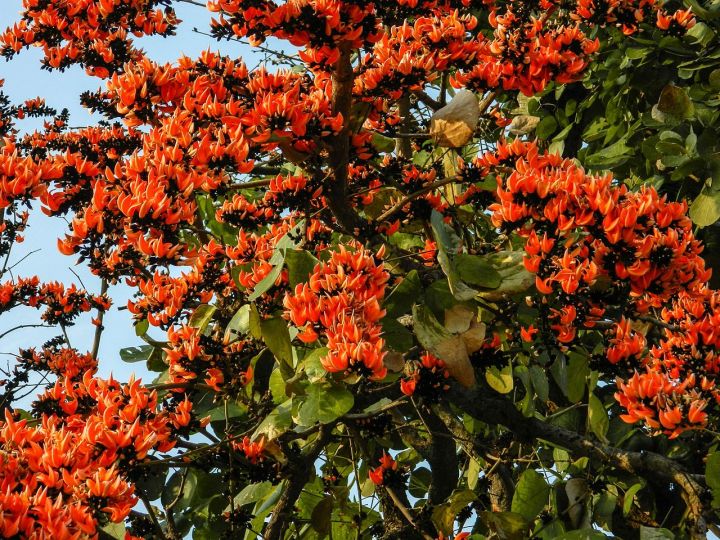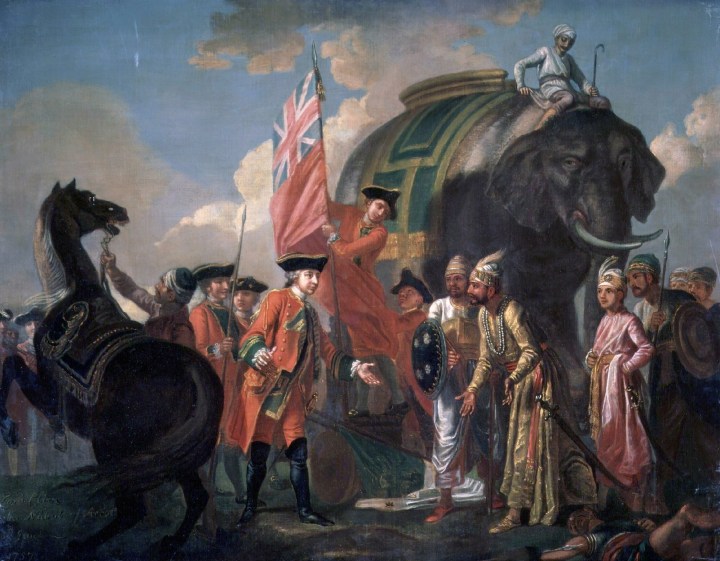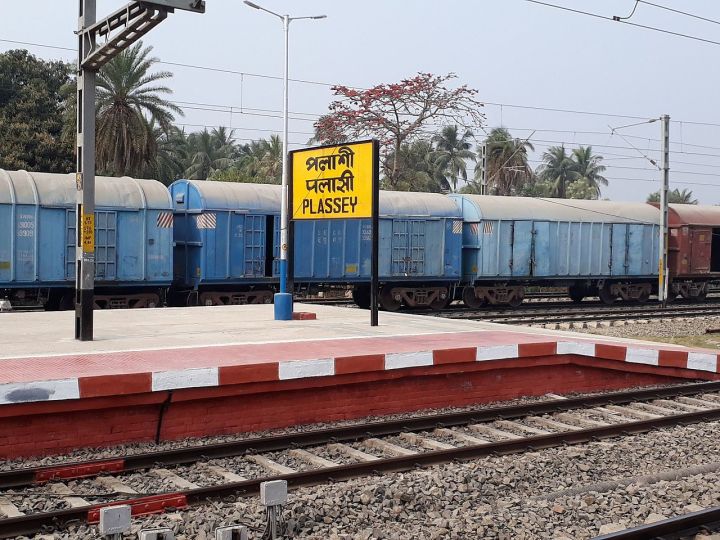By S.V.Kaushik
I know what you were thinking when you read the title….
- Really, did Robert Clive fight a battle in Purasai?
- Was he the Englishman who colonised the place we now call Purasaiwakkam?

The place where you go shopping for Diwali, Saraswati Puja, Pongal and just-like-that summa (சும்மா) — the Purasaiwakkam that we Chennai-ites know — was first taken on lease from the local Moghul Underling, by the Madras Governor Yale. During the 1680s, British trade in Madras had grown so much that both Fort St. George and the adjacent Black Town (now George Town) were choc-a-bloc. So Yale decided to expand the town by leasing the nearby Purasaiwakkam. It was a nice wooded area with a lot of trees: flowering trees known in Tamil as Purasai. So Purasai-wakkam was simply “The place of Purasai trees”.
Most residents of Purasaiwakkam would find difficulty in describing the Purasai tree to you. That’s because those trees have just vanished from Purasaiwakkam: it is now a concrete jungle where several generations have lived without ever sighting a Purasai. One old resident told me that the only Purasai tree of Purasaiwakkam can be found inside the Gangadeeswarar Temple. Perhaps, it has survived because it is the Stala-Vriksha (holy tree) of the Temple. It is also known as Flame-of-the-forest, or Butea Monosperma. It looks like this:
Now you are thinking: enough of this botanical-bluster, where is Clive in all this? Be patient my friend, and I’ll tell you.
My response to the first question is: it all depends on which Purasai you are talking about. And the answer to the second question is: no, that honour goes to another corrupt English Governor called Elihu Yale. Let me explain.

Do you remember Robert Clive’s most famous battle? The Battle of Plassey – where Colonel Clive’s small army defeated the Bengal Nawab’s huge army. Well, “Plassey” is the anglicised version of “Palashi” which was the correct local name of that battlefield. “Palashi” is the Bengali word for …. why, Purasai of course! The place was full of Palashi trees and hence the name Palashi or Plassey.
Now, Clive’s “small” army had a “large” contingent of “Namma Ooru Veerans” a.k.a. the 1st Madras Regiment. All these Tamil soldiers of Clive’s expeditionary force, what would they have called this place of Palashi trees? Why, Purasai of course. For them it was the Battle of Purasai, no? Touché!
Grateful acknowledgement: All the pictures in this blog-post are courtesy WIKIPEDIA.

Archives
- January 2022
- December 2021
- November 2021
- August 2021
- March 2021
- February 2021
- January 2021
- December 2020
- November 2020
- October 2020
- September 2020
- August 2020
- April 2020
- March 2020
- February 2020
- January 2020
- November 2019
- October 2019
- September 2019
- August 2019
- July 2019
- June 2019
- August 2017
- February 2017
- January 2017
- October 2013
Featured Posts
- Tales that pots tell: Keeladi excavations AUGUST 18, 2021
- The Last Grand Nawab: Wallajah FEBRUARY 10, 2021
- How Tej Singh became Raja Desingu of Gingee FEBRUARY 5, 2021
- How Shahjahan seized the Mughal throne JANUARY 28, 2021
- Alai Darwaza – Qutub Minar Complex, Delhi NOVEMBER 21, 2020
- Marking History through British buildings NOVEMBER 17, 2020
- The last great queen of Travancore NOVEMBER 7, 2020
- Brahmi and the evolution of scripts OCTOBER 15, 2020
- The Cambodian King of Kanchipuram OCTOBER 14, 2020
- James Prinsep – the man who read the writing on the wall OCTOBER 10, 2020
- Mariamman – the Village Goddess who travelled SEPTEMBER 30, 2020
- Misnamed Monuments of Mamallapuram SEPTEMBER 28, 2020








